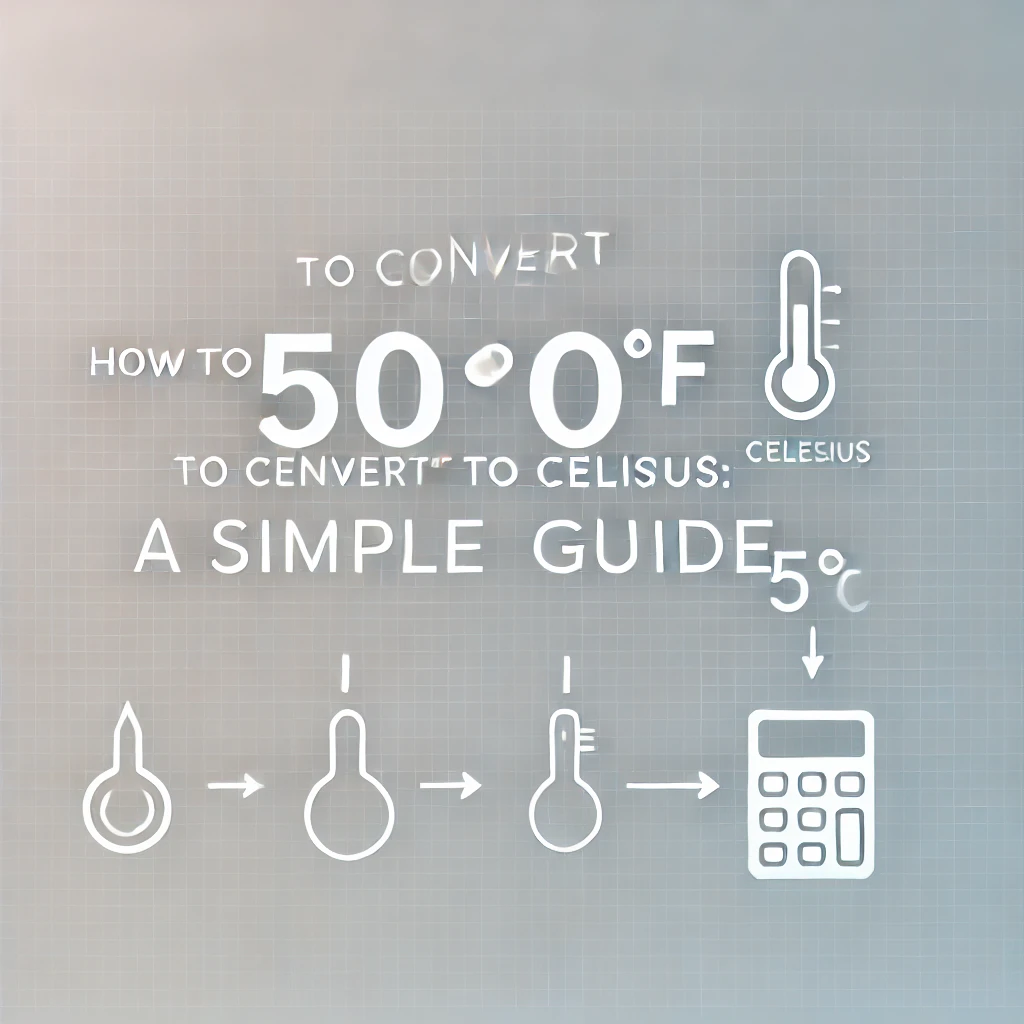Introduction:
When you’re faced with converting Fahrenheit to Celsius, it can sometimes feel confusing. For many people in the U.S., Fahrenheit is the go-to temperature scale, while in most other parts of the world, Celsius is the standard. But what happens when you’re traveling or reading a recipe and come across temperatures in a different unit? Let’s break it down easily—starting with a common temperature people wonder about: 50°F to Celsius.
In this post, you’ll learn how to make this conversion, why it’s important to understand both scales, and some useful tips to help you with other temperature conversions. Plus, we’ll answer a few frequently asked questions to clear up any confusion!
What Does 50°F Mean in Celsius?
To convert 50°F to Celsius, there’s a simple formula you can use:
°C=(°F−32)×59°C = (°F – 32) × \frac{5}{9}°C=(°F−32)×95
Now, let’s plug in 50°F:
°C=(50−32)×59°C = (50 – 32) × \frac{5}{9}°C=(50−32)×95
First, subtract 32 from 50, which gives us 18. Next, multiply 18 by 5, which equals 90. Finally, divide 90 by 9, and you get 10°C.
So, 50°F is equal to 10°C.
Why Is It Useful to Know This?
Whether you’re cooking, checking the weather, or traveling, understanding how to convert between Fahrenheit and Celsius is useful for a few reasons:
- Traveling abroad: If you’re visiting a country that uses Celsius, like most of Europe or Asia, knowing how to convert can help you understand the local weather forecast.
- Science and medicine: Most scientific and medical fields rely on the Celsius scale. If you’re working with international studies or medical data, you’ll often encounter Celsius.
- Cooking and baking: Some recipes, especially those from countries that use Celsius, list temperatures in °C. Knowing how to convert helps you avoid burnt cookies or undercooked meals!
Quick Conversion Tips for Everyday Use

If you’re frequently converting between Fahrenheit and Celsius, you don’t always need to do the math. Here are some simple tricks:
- Water freezes: In Fahrenheit, water freezes at 32°F. In Celsius, it freezes at 0°C.
- Water boils: In Fahrenheit, water boils at 212°F. In Celsius, water boils at 100°C.
- Room temperature: Comfortable room temperature is typically around 68-72°F or about 20-22°C.
Knowing these common reference points can help you make rough estimates without having to calculate every time.
Using a Conversion Calculator
Sometimes, you’re in a rush and just want the answer without the math. In that case, an online temperature conversion calculator is your best friend. Simply type in the temperature you want to convert, and it does the rest. While the calculation for 50°F to Celsius is straightforward, this tool is handy when you encounter less familiar numbers.
The Science Behind the Fahrenheit and Celsius Scales
The two most common temperature scales, Fahrenheit (°F) and Celsius (°C), were developed by different scientists:
- Fahrenheit was developed by Daniel Gabriel Fahrenheit in 1724. His scale was based on three points: the freezing point of water, the body temperature of a healthy human, and the boiling point of water.
- Celsius (originally called Centigrade) was introduced by Anders Celsius in 1742. His scale is based on the freezing and boiling points of water at sea level, making it simpler and more intuitive for scientific purposes.
Why Do We Use Different Temperature Scales?
You might wonder why some countries use Fahrenheit while others use Celsius. Here’s a quick breakdown:
- Fahrenheit: Mostly used in the U.S. and a few Caribbean nations. The Fahrenheit scale was historically more popular in English-speaking countries.
- Celsius: Widely used across the globe, especially in scientific communities and most countries outside the U.S. Celsius is often preferred for its simplicity and connection to the metric system.
Common Temperature Conversions
Here are some other helpful Fahrenheit to Celsius conversions:
- 32°F = 0°C (Freezing point of water)
- 68°F = 20°C (Comfortable room temperature)
- 98.6°F = 37°C (Normal body temperature)
- 104°F = 40°C (Hot summer day)
These can be useful benchmarks for quickly converting and understanding temperatures without doing complex math every time.
Conclusion
Converting 50°F to Celsius is straightforward: 50°F is equal to 10°C. Understanding how to convert between these two scales can be incredibly helpful whether you’re traveling, cooking, or simply checking the weather. Keep in mind the simple formula or use one of the many online converters if you’re in a rush.
Remember, next time you’re faced with a temperature in Fahrenheit, don’t let it trip you up—just use the formula we discussed, or bookmark this page for easy reference!
FAQs
1. How do I convert Fahrenheit to Celsius?
To convert Fahrenheit to Celsius, subtract 32 from the Fahrenheit temperature and then multiply the result by 5/9. For example, 50°F would be converted like this: (50 – 32) × 5/9 = 10°C.
2. What is the easiest way to remember the formula?
A good trick is to remember that freezing is 32°F and 0°C, and the difference between Fahrenheit and Celsius scales is related to the numbers 5 and 9. Subtract 32, multiply by 5, and divide by 9.
3. Why do the U.S. and some other countries still use Fahrenheit?
The U.S. uses Fahrenheit for historical reasons. Over time, most countries switched to Celsius because it is simpler and aligns with the metric system, but the U.S. stuck with Fahrenheit for general use.
4. Is 50°F a warm or cold temperature?
50°F (10°C) can feel chilly, depending on where you’re from. It’s usually considered mild or cool, perfect for wearing a light jacket.
5. Can I convert temperatures without a calculator?
Yes! The formula isn’t too difficult to memorize, and for quick estimates, you can always round numbers for an approximate result. If you’re frequently converting, using a conversion app can save time.








